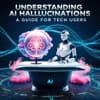As artificial intelligence becomes more integrated into our daily lives, it’s essential to understand some of its quirks—like the phenomenon known as "AI hallucinations." This term refers to when AI generates incorrect or nonsensical information, and it’s a pitfall that users need to be aware of.
AI systems are designed to analyze vast amounts of data and produce responses based on patterns they recognize. However, sometimes they can take creative liberties, resulting in outputs that seem plausible but are actually inaccurate. This can be particularly concerning in scenarios where accuracy is critical, such as in medical or legal contexts.
For everyday users, this means it’s vital to approach AI-generated content with a healthy dose of skepticism. Just because an AI provides an answer doesn’t mean it’s the right one. It's always a good idea to verify information, especially when making important decisions based on AI suggestions.
So, how can you navigate this issue? Start by cross-referencing AI outputs with trusted sources. Developing a habit of fact-checking can save you from misinformation and help you make more informed choices. Additionally, staying updated on AI technology and its limitations can empower you to use these tools more effectively.


